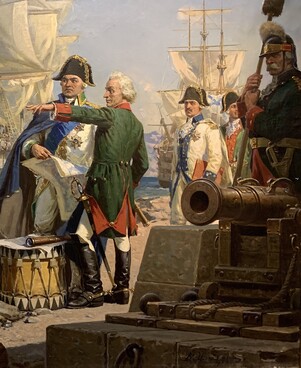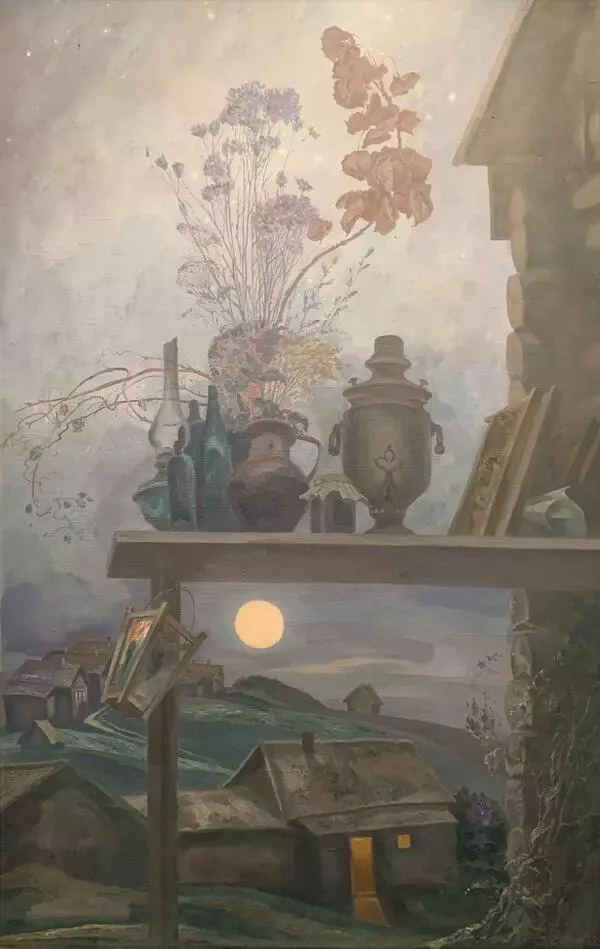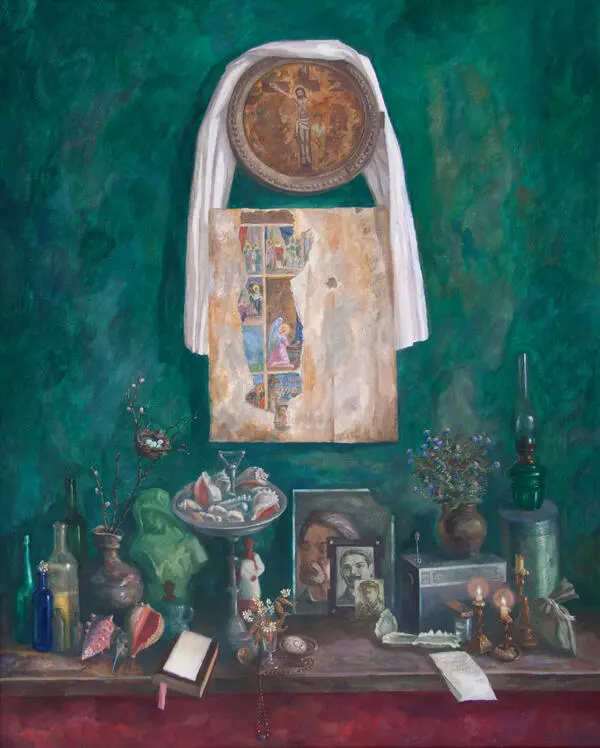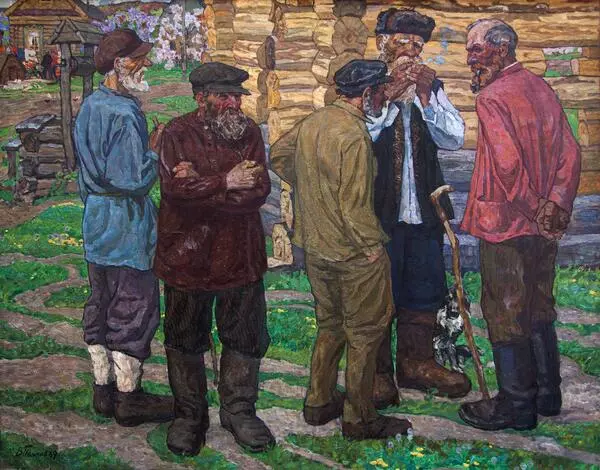The spiritual and philosophical theme is the most prominent one in the artworks of Valentin Alekseevich Popkov. In the late 20th century, he was one of the first Mordovian artists to mark the theme of soul in modern art. During this period, the painter creates canvases with philosophical content and a complex system of subtexts. At the same time, the artist builds on the traditions of icon painting with its symbolism, richness of meaning and conventionality of pictorial means. The painter enjoyed his experience in Palekh, where in the 1970s he studied the laws of ancient Russian art under the guidance of the master of lacquer miniature Nikolay Mikhailovich Zinoviev.
In the painting by Valentin Popkov “Prayer to Virgin”, an entire story about the path to the temple is hidden behind the apparent absence of a plot. A lit candle burns with a soft light in front of the icon of the Kazan Mother of God. It symbolizes the soul coming to the image of Mary with the Baby Jesus.
The scales and ratios of objects chosen by the artist also tell us a lot. Outside the window is the divine blue of the heavens. On the top of the hill, as if on the edge of the world, rises a white church, it stretches upwards to the starry dome of the sky. Other images are also pointed up to the sky — the flame of the candle, the arch of the window, and the stem of the white rose.
The dome-like quality and roundness of the images, and the softness of the outlines are designed to convey an atmosphere of prayerful trust and openness. The composition of the painting also creates a special effect. The artist depicts the corner of the izba as slightly raised, like a ship’s bow on the crest of a wave. Thanks to this technique, the izba seems to be flying above the ground.
The central axis of the composition vertically divides the canvas into two parts. The icon on the left side and the window on the right mirror each other. Together they resemble an open book that the human soul reads. The image of the Virgin and Child on one side and the white rose flowers on the other are symmetrical. The white color was chosen deliberately, as it symbolizes the purity and holiness of the Virgin Mary.
Thanks to the technique based on “mirroring”, the icon in the painting is perceived as a window into the heavenly world in accordance with the Orthodox tradition. The famous theologian Pavel Florensky compared the icon to a window, behind which stretches spiritual light. In his artworks, Valentin Popkov often used the image of a window as a symbol of the connection between the soul and the universe.
In the painting by Valentin Popkov “Prayer to Virgin”, an entire story about the path to the temple is hidden behind the apparent absence of a plot. A lit candle burns with a soft light in front of the icon of the Kazan Mother of God. It symbolizes the soul coming to the image of Mary with the Baby Jesus.
The scales and ratios of objects chosen by the artist also tell us a lot. Outside the window is the divine blue of the heavens. On the top of the hill, as if on the edge of the world, rises a white church, it stretches upwards to the starry dome of the sky. Other images are also pointed up to the sky — the flame of the candle, the arch of the window, and the stem of the white rose.
The dome-like quality and roundness of the images, and the softness of the outlines are designed to convey an atmosphere of prayerful trust and openness. The composition of the painting also creates a special effect. The artist depicts the corner of the izba as slightly raised, like a ship’s bow on the crest of a wave. Thanks to this technique, the izba seems to be flying above the ground.
The central axis of the composition vertically divides the canvas into two parts. The icon on the left side and the window on the right mirror each other. Together they resemble an open book that the human soul reads. The image of the Virgin and Child on one side and the white rose flowers on the other are symmetrical. The white color was chosen deliberately, as it symbolizes the purity and holiness of the Virgin Mary.
Thanks to the technique based on “mirroring”, the icon in the painting is perceived as a window into the heavenly world in accordance with the Orthodox tradition. The famous theologian Pavel Florensky compared the icon to a window, behind which stretches spiritual light. In his artworks, Valentin Popkov often used the image of a window as a symbol of the connection between the soul and the universe.







